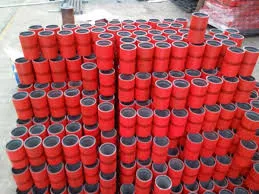seating nipple in tubing
Understanding the Importance of Seating Nipple in Tubing
In the world of oil and gas production, the proper functioning of equipment is critical for efficiency and safety. One often overlooked component is the seating nipple in tubing. This small yet vital piece of equipment plays a crucial role in the overall performance of the wellbore, helping to ensure that various tools and equipment can be easily deployed and retrieved. In this article, we will explore the significance of seating nipples, their design and function, and the considerations involved in their use.
What is a Seating Nipple?
A seating nipple is a specialized tool utilized in conjunction with tubing during drilling and production operations. It is designed to create a secure location for the seating of downhole tools, such as packers, plugs, or valves. By providing a reliable anchoring point, seating nipples facilitate the efficient deployment and retrieval of these tools, thereby optimizing the operational workflow.
Seating nipples come in various sizes and configurations, tailored to meet the specific requirements of the wellbore and the tools being used. They are typically characterized by an internal profile that matches the external profile of the tool that is meant to seat within it. This ensures a snug fit, minimizes leakage, and maintains well integrity during operations.
The Functionality of Seating Nipples
The primary function of a seating nipple is to provide a reliable and robust point at which downhole tools can be seated and held in place. This is particularly important in operations involving well control, where tools need to withstand significant pressure and tension. The seating nipple is designed to resist the forces exerted during the installation and retrieval of these tools, ensuring secure placement under varying conditions.
Additionally, seating nipples help in optimizing the efficiency of operations. By allowing for quick and easy seating of tools, they reduce the time required for various downhole activities. This is particularly beneficial in the context of well maintenance, where minimizing downtime is crucial to maintaining production levels.
seating nipple in tubing

Design Considerations
The design of seating nipples is critical to their functionality. Various factors must be taken into account, including the materials used, the load-bearing capacity, and the compatibility with the downhole tools intended for use. Common materials for seating nipples include steel and other alloys that can withstand hostile downhole environments, such as high pressures, corrosive fluids, and extreme temperatures.
Moreover, the selection of the appropriate seating nipple should take into account the specific well conditions and the type of downhole tools being utilized. For instance, different types of packers might require specific seating profiles to ensure proper sealing and functionality. Therefore, thorough planning and consultation with engineering teams are imperative when choosing seating nipples for any given operation.
Maintenance and Best Practices
To ensure the longevity and effectiveness of seating nipples, regular maintenance and inspection are necessary. Workers should check for any signs of wear, corrosion, or damage before and after operations. It is also important to ensure that each tool is compatible with the seating nipple to prevent any operational issues down the line.
Best practices in the industry suggest using lubricants during the seating of downhole tools to minimize wear and facilitate easier retrieval. Additionally, operators should adhere to operational guidelines set forth by manufacturers to ensure safe and efficient use.
Conclusion
The seating nipple is a fundamental component in the complex system of oil and gas production. By providing a reliable anchoring point for downhole tools, it enhances operational efficiency and ensures well integrity. Understanding the importance of this small but significant tool can greatly impact the success of drilling and production operations. As the industry continues to evolve, embracing innovations and advancements in the design and application of seating nipples will only serve to improve safety and productivity in the field. Recognizing the role of every component, no matter how small, is essential for success in the oil and gas industry.
-
Unlock the Benefits of Pup Joints for Your OperationsNewsOct.31,2024
-
The Quality of Casing Couplings from ChinaNewsOct.31,2024
-
The Essential Role of Pup Joints in Drilling OperationsNewsOct.31,2024
-
The Benefits of Tubing Couplings for Your ProjectsNewsOct.31,2024
-
Enhance Your Drilling Operations with Tubing Pup JointsNewsOct.31,2024
-
Elevate Your Drilling Operations with Tubing CrossoversNewsOct.31,2024







